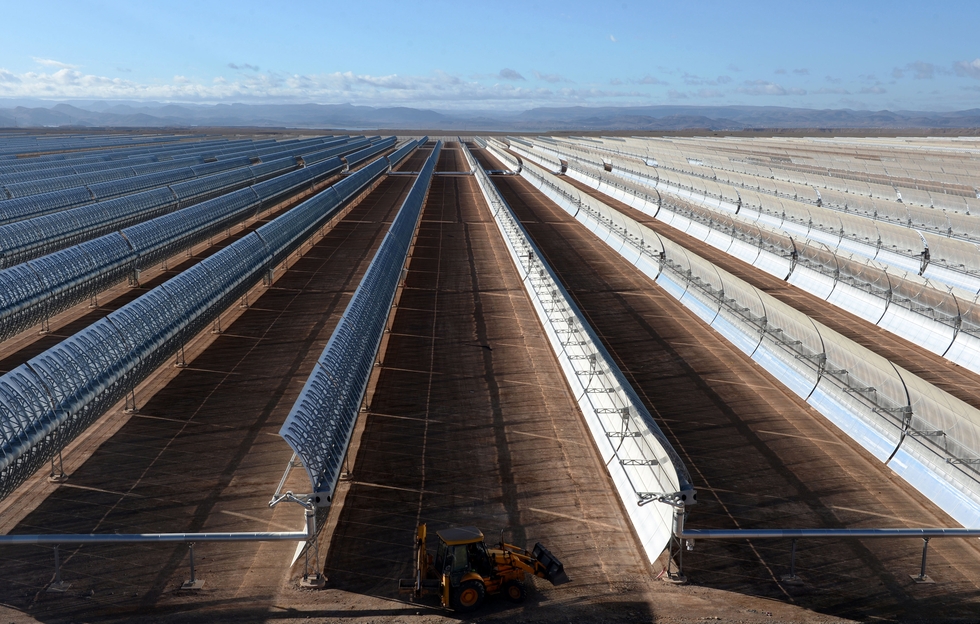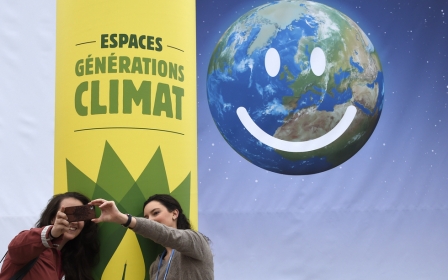Morocco is going green and the rest of the world should take note

As 2015, the warmest year on record, draws to an end, and the commentators are debating the outcome of this month's climate change summit in Paris COP21, Morocco is already readying to launch a very ambitious clean energy project, aptly named "Noor" (meaning light in Arabic).
With a potential capacity of 580 megawatts (MW), the $9bn Noor project is expected to cover an area equivalent to a city the size of the capital Rabat and provide electricity to 1 million homes. It is the fruit of the North African kingdom’s efforts in recent years to reduce its dependence on imported energy, which has been a chronic burden on state coffers.
The first phase of the project, Noor 1, is scheduled to start operating by the end of this year. Noor 2 and Noor 3 will follow suit in 2016 and 2017, while Noor 4 - which will use photovoltaic technology which converts solar energy into electricity - is open to tenders.
Completion of the $660mn Noor 1 plant means that it will be operating only a few weeks after the conclusion of COP21, underlining Morocco's commitment to meet emission targets that it announced at the conference. It also helps to set the stage for next year's COP22, which Morocco will host, and herald its efforts to become a leader in the transition to renewable energy and away from dependence on energy imports.
The government aims to achieve an additional capacity of 6,760 MW between 2015 and 2025, of which 3,120 MW is to be solar energy, 2,740 MW wind and 900 MW hydroelectric.
Clean environment amid rising energy demand
The North African country is the biggest importer of energy in the Middle East and North African (MENA) region. With a growing energy consumption of around six percent annually over the past 10 years, Morocco has had to find alternative solutions to meet its population’s rising energy demand while keeping its environment clean.
In December 2014, Morocco inaugurated Africa’s largest wind farm with a capacity of 300 MW. The wind farm represents about 40 percent of the country’s total wind capacity in commercial operation to date.
Overall the country has wind energy production of over 800 MW already in operation, 550 MW under development and 850 MW under contract, while an additional 1,000 MW capacity is planned between 2021 and 2025.
Reduce greenhouse emissions
Morocco's fuel-subsidy budget increased dramatically over the past decade, and with oil budget costs declining as the country ramps up alternative energy sources, the Islamist-led government has now taken the courageous decision to abolish diesel subsidies on 1 January, ending a chronically expensive and unsustainable burden on the country’s economy.
The government can now focus on achieving the country’s objective of boosting its clean energy output.
Morocco pledged at COP21 to reduce its greenhouse emissions by at least 13 percent by 2030. Although this sounds relatively modest, its clean energy vision is ambitious - it seeks to meet 52 percent of its total power needs by 2030, an equivalent of 6,000 MW. To meet this target, an investment of $35bn has to be poured into the electricity and clean energy sectors, providing a big business opportunity for foreign companies.
Noor 1 is expected to allow the country to cut CO2 emissions by 240,000 tonnes per year, and once Noor 2 and Noor 3 are up and running, emission cuts should reach 522,000 tonnes, or 1 percent of its CO2 emissions of 56.5 million tonnes in 2011, according to the energy ministry.
Job creation
Renewable energy in Morocco is also contributing to the development of job creation and industrialisation, further helping economic growth. Noor 1 alone has created around 1,000 jobs and will certainly bolster local businesses in the southern region of Ouarzazate, where the project is based.
The Moroccan government last month took another powerful step towards cleaning up the environment - albeit far removed from solar-power generation - after parliament approved a draft bill last month to ban the manufacture, importation, marketing and use of plastic bags from 1 July, 2016, although still authorising certain types of bags such as trash, cooler, freezer bags and those for agricultural use. The move could not have come too soon, since Morocco is the world’s second-largest plastic bag consumer, with 26 billion plastic bags being consumed each year.
The move can be seen as working in tandem with the goal of boosting eco-tourism in the country.
Challenges
While environmental organisations expressed their delight at the decision, the move did have its critics as workers in the plastic industry saw it as a threat to their existence in the market, with an estimated loss of 50,000 direct and indirect jobs.
The government has yet to indicate any specific alternative to plastic bags. Biodegradable paper bags could be an alternative but would require uprooting of trees and a lot of energy for their production. The government needs to meticulously set out a durable and eco-friendly alternative to plastic bags. Morocco has in the past prohibited the use of black plastic bags, which were a grave health and environmental hazard.
It is clear that finding ideal answers will not be easy or without challenges. But there are stories of success with regards to solar and wind energy in Germany, for example, and in the MENA region perhaps Morocco should be viewed as one of the shining examples to follow.
- Saad Guerraoui is a senior editor at Middle East Online and regular contributor to the Arab Weekly newspaper. He graduated from Newport University (London Campus) with a PhD in Business Administration. He has appeared on various satellite TV channels as an analyst.
The views expressed in this article belong to the author and do not necessarily reflect the editorial policy of Middle East Eye
Photo: Solar mirrors at the Noor 1 Concentrated Solar Power (CSP) plant, some 20km (12.5 miles) outside the central Moroccan town of Ouarzazate on 17 October, 2015 (AFP)
New MEE newsletter: Jerusalem Dispatch
Sign up to get the latest insights and analysis on Israel-Palestine, alongside Turkey Unpacked and other MEE newsletters
Middle East Eye delivers independent and unrivalled coverage and analysis of the Middle East, North Africa and beyond. To learn more about republishing this content and the associated fees, please fill out this form. More about MEE can be found here.





